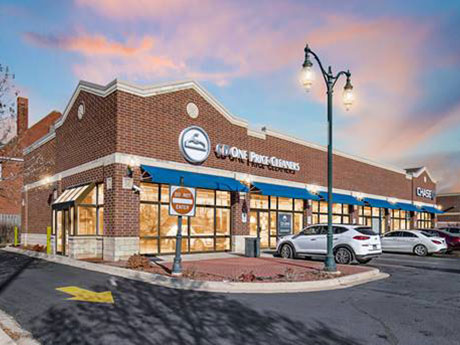By Jared Shapiro, Marcus & Millichap
The commercial retail market is a consistently evolving landscape that plays a vital role in shaping our economy. With consecutive months of broad growth, health and convenience remain a priority for shoppers. With the combination of more households planning seasonal trips and underlying tenant demand remaining extraordinarily strong, the commercial retail sector has become the “darling of the industry.”
As seen in the June meeting, the Federal Reserve took a rate hike hiatus for the first time since March 2022, which should lead to some stabilizing of the capital markets. Is the retail investment market poised for a growth and boom cycle? In short, the answer is yes. Currently, there is a lack of for-sale inventory on the market for multi-tenant shopping centers, which is creating a scenario where we are consistently seeing multiple qualified offers on deals that we are seeing in the market.

As we are getting deeper into the summer months, the flow of 1031 exchange money will continue to grow. This will be a positive element for the single-tenant net-lease sector, as it has historically seen the most aggressive buyers of triple-net deals in 1031 exchanges.
When viewed from a historical perspective, the cap rate trends are consistently appealing. Grocery-anchored centers stand out as an essential asset class due to their attractiveness as recession-resistant properties with a loyal and recurring customer base. Neighborhood shopping centers are also highly desirable due to their convenience, diverse retail offerings, personalized services and their role in supporting local communities. These centers are becoming vibrant commercial hubs that seamlessly integrate with residential neighborhoods.
Pricing/cap rates are being influenced by typical market forces, gradually bridging the gap between sellers and buyers, and reducing the persistent “price dislocation” that has been associated with the timing of interest rate increases. The adjustment in cap rates, which respond to both upward and downward movements in interest rates, is occurring at a slower pace than we have witnessed in the past, reflecting the delayed impact of interest rate changes.
The retail market is witnessing an opportunity for expansion due to store closures. Prominent retailers in the commercial real estate market such as Party City, Bed Bath & Beyond and Tuesday Morning have been closing their stores. However, this presents a favorable scenario as numerous vendors are eager to fill these recently vacated spaces. Retailers with strong financial positions and consistent growth in store sales like Five Below, Burlington, Ulta and TJX Cos. are actively competing for these locations. Vacancies are likely to be filled by off-price retailers, dollar stores and grocers.
Additionally, we are beginning to see an increase in new tenants, as trampoline parks and pickleball courts play a role in taking up some of these vacancies as well. This will be the 11th year of consecutive rent growth with a 3 percent increase year over year. Overall vacancy rates have decreased 30 to 40 basis points in the last year, suggesting that retailers are expanding not only in major cities but also in smaller urban areas.
The combination of limited available space and minimal supply-side pressure puts the retail market in a highly advantageous position. However, retailers and landlords have faced challenges related to permitting and city delays when seeking tenants for their buildings, as many authorities are operating with reduced staff, and some are still working remotely.
Retail property owners have several debt options available to them. While banks are still willing to lend, some may require significant down payments, especially if there is no existing relationship with the borrower. Credit unions and life insurance companies are also actively providing financing, along with the commercial mortgage-backed securities (CMBS) market.
Obtaining financing for a retail acquisition heavily depends on the quality of the tenant base. Shopping centers situated in prime locations, commanding rising rental rates, lower vacancy rates, positive sales trends and experiencing limited new development have all proven advantageous for borrowers. Although seller financing is being offered, it remains relatively less common. As landlords’ loans approach maturity, borrowers must face crucial decisions to make as capital remains available, albeit at lower leverage ratios.
To emphasize once again, the retail sector is alive and well. We can observe this through the evidence of bid sheets, completed escrow transactions, rising rental prices, low vacancy rates and an increase in consumer spending, which is consistently being reflected in reported tenant sales figures. Retail as an asset class continues to deliver strong performance, and despite the inevitable macro-economic challenges ahead that are beyond landlords’ control, it remains an appealing investment option for investors. Unanchored strip centers, which have gained favor in the first half of the year, are showing robustness, and attracting interest from both private and institutional investors.
With myriad tailwinds supporting it, the retail commercial real estate market is poised for continued growth and profitability, instilling a positive outlook in the retail capital markets.
Jared Shapiro is a senior associate with Marcus & Millichap in metro Cleveland. This article originally appeared in the August 2023 issue of Heartland Real Estate Business magazine.


